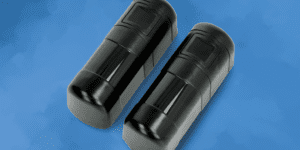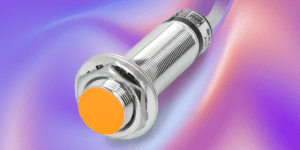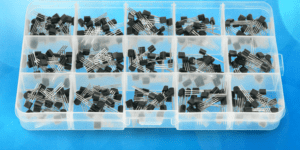Sensors in service of man
The automation of life is progressing constantly and at every step – with the development and spread of consumer electronics, armed with a variety of sensors, we increasingly surround ourselves with devices from the smart category. They monitor our physical activity and sleep, notify and remind us of all important matters and monitor our behaviour. And what do all these devices have in common?
All of them have various sensors and their nifty applications to improve our daily lives. All because the human body is capable of measuring various parameters, both optically and electrically, as it generates a whole host of signals to be used itself. For example, simply moving a finger – the human brain sends out an electrical impulse to stimulate muscles, in other words, it acts just like a microcontroller that gives a control signal. This signal just needs to be measured with the right equipment, and used.
And there is no shortage of ideas for this, especially as new and improved designs appear every now and then, such as the new MyoWare line of sensors from Sparkfun. The creators emphasize that the entire MyoWare 2.0 range is designed and built from scratch, which gave the opportunity to improve their functionality and ergonomics of use. An additional advantage is the fact that they are based on Arduino, which significantly increases the possibility of using them by a wide range of electronics fans, engineers and designers. These devices belong to a family of sensors used in electromyography, that is, they focus on measuring the excitation of human muscles.
The new MyoWare 2.0 family
As we learn from Sparkfun, the manufacturer of the sensor system – this is by no means a new generation of medical equipment. They are not for diagnostic purposes, nor for treatment, and their ability to analogue the tension of individual muscle groups is intended to be used, for example, in controlling computer games, controlling robots, or can even be used in the use of mobile prostheses. Each of the new boards from Sparkfun has been carefully designed with functionality and ease of use in mind. Each module has three snap fasteners for connecting electrodes or even other boards from the same series.
MyoWare 2.0 Muscle Sensor

The basis of the MyoWare 2.0 family is a muscle sensor. Special pads are used to attach the sensor to the body. Connection is trivially easy – you simply snap the target element to the board. The same with the other shield-type modules, which allow many options for configuring the system, which we can build ourselves and quickly to best suit the MyoWare 2.0 ecosystem to our needs. The sensor has reverse polarity protection and can be powered by 3.3V or 5V. It also has a potentiometer, with which we can set its sensitivity level. Additionally, on the board surface, we have access to various pins, e.g. for direct connection with Arduino.
The MyoWare 2.0 Reference Cable can also be useful, which is an extension of the specially marked muscle tension sensor reference pin and can go where the sensor connectors would not be able to properly collect comparative information, such as at less muscular parts of the body like the elbow or knee.

MyoWare 2.0 Power Shield

The overlay provides the power to enable remote use of the Muscle Sensor. The MyoWare 2.0 Power Shield connects to the sensor via snaps, positioned at each corner of the sensor – exactly like the board of the sensor itself. The Power Shield has a single 40mAh lithium-polymer (LiPo) cell, which can be easily switched on, or disconnected from the circuit with a slider. The battery is charged via the USB C connector. Charge status is indicated by LEDs.
MyoWare 2.0 LED Shield

To determine the strength of muscle tension in a spectacular way, you can use the LED Shield overlay. It is equipped with a 10-segment LED strip. The strip works according to the principle: the higher the voltage – the more illuminated segments you will see on its surface. It slightly resembles the Power Shield module in operation, as this overlay is also able to power the muscle voltage sensor. As with the Power Shield overlay, there is also a 40mAh LiPo battery charged via a USB C connector.
MyoWare 2.0 Link Shield

This overlay is designed to allow convenient connection of several sensors (if we are going to heavily expand the system) with Arduino microcontroller or with other overlays. Link Shield has a 3.5mm jack connector for cable to connect it to Arduino Shield module and 3 latches to integrate it with muscle voltage sensor. There are also two switches on its surface – for power and for selecting the signal output mode. It also has a jumper for ground and indication LEDs.
MyoWare 2.0 Cable Shield

The plate is used to place the measuring electrode at a distance from the sensor itself. The Cable Shield can also be used to test the system without attaching the sensor to the body. The cap is equipped with the same latch as on the sensor and a 3.5mm jack connector which makes it possible to connect a standard cable with 3 electrodes. This allows the testing of muscle tension in places that are difficult to access, e.g. where the targeted muscle groups are too small and the sensor would not be able to correctly read the value from them, e.g. the surface of the hand.
Add Your Heading Text Here

Just as important as the single sensor itself is the module, to which we can connect up to 6 muscle sensors by using Link Shield caps. This uses an audio cable with a 3.5mm jack connector. There are also leads on board for the Arduino Uno microcontroller, and connecting to it means endless possibilities of use. Simply place the cap on the microcontroller platform and slide into the terminals. The module also has jumpers to specify the voltage level for the sensors – a choice of 3.3 or 5V.
Plug in, assemble and enjoy!
With such a set of possibilities is a whole lot of possibilities, and you can see one of the better demonstrations of the possibilities of the MyoWare 2.0 system on the official Sparkfun YouTube channel. We encourage you to watch!
How useful was this post?
Click on a star to rate it!
Average rating 0 / 5. Vote count: 0
No votes so far! Be the first to rate this post.








